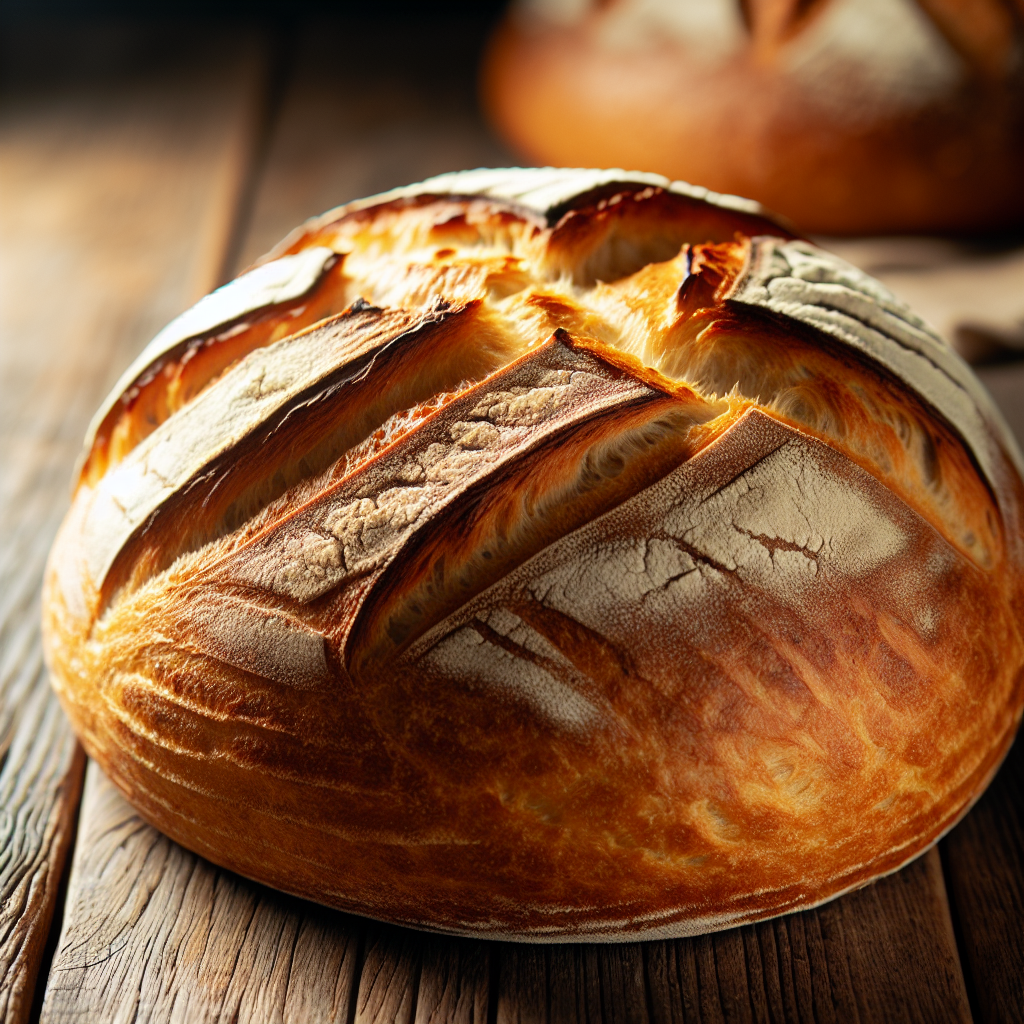Easy Bread European Flour Recipes
Table of Contents
Introduction
European bread is cherished worldwide for its distinct flavors and textures. From the crusty baguettes of France to the hearty rye loaves of Germany, European breads offer a rich variety of tastes and traditions. At the heart of these breads is high-quality European flour, known for its purity and unique properties. Whether you’re a seasoned baker or a novice in the kitchen, using authentic European flour can elevate your bread-making skills, helping you create delicious loaves at home effortlessly. Let’s explore some easy bread recipes that will transport these classic European flavors straight to your kitchen.
Why Choose European Flour Recipes for Bread Making?
Choosing European flour recipes for bread making offers a unique taste and texture distinctly different from what’s common in American bread. European flours are often stone-ground, preserving more of the grain’s natural nutrients. This traditional process contributes to the rich flavors and complex textures found in European bread varieties. Additionally, European flours come from wheat strains specifically cultivated for bread making, resulting in higher protein content, which is crucial for the perfect rise and crumb.
Understanding the Different Types of European Flour
European flours vary widely, catering to different bread types and baking techniques. Here are some common varieties:
– Type 00 Flour: Mostly used in Italy, this flour is exceptionally finely-ground and ideal for making pasta and pizza dough, offering an elastic texture.
– Type 55 Flour: Popular in France, this is the go-to flour for baguettes and croissants. It has a moderate gluten content that helps create a soft and airy bread structure.
– Rye Flour: Widely used in Germany, it’s perfect for dark, dense loaves like pumpernickel due to its hearty flavor and lower gluten content.
Why European Style Bread is Different from American Bread
European style bread often emphasizes simplicity, relying on natural fermentation, minimal ingredients, and traditional techniques. This contrasts with many American breads that use added sugars and fats to enhance sweetness and texture. European breads typically have a denser and chewier consistency while embracing a more rustic, natural appearance. This focus on quality and tradition results in a product that prioritizes flavor and authenticity.
Top European Flour Recipes for Easy Bread You Can Make at Home
Here are some delightful recipes for European-style bread that are simple to recreate in your own kitchen:
1. French Baguette: A classic staple, the baguette requires Type 55 flour and is characterized by its crisp, golden crust and soft interior. With just flour, water, salt, and yeast, you can achieve this timeless bread.
2. Italian Ciabatta: Made with Type 00 flour, this bread is known for its porous, open crumb and delicate crust. It’s perfect for sandwiches or soaking up olive oil and balsamic vinegar.
3. German Rye Bread: Using rye flour, this bread is dense and flavorful, perfect for pairing with hearty meals. Its tangy taste comes from sourdough starter, which helps the complex flavors develop.
These recipes not only offer a taste of Europe but also bring artisanal baking into your home kitchen, allowing you to experience the pleasure of authentic bread-making.
Easy Bread Recipe: Simple French Bread Rolls
French bread rolls are a delightful addition to any meal, providing a crispy crust with a soft, chewy interior. Using European flour can bring authentic taste and texture to your homemade rolls. Let’s delve into how you can make these delicious bread rolls with ease.
Ingredients and Tools Needed
To make simple French bread rolls, you’ll need the following ingredients:
– 3 1/2 cups of European bread flour
– 1 cup of warm water (about 110°F/45°C)
– 2 1/4 teaspoons of active dry yeast
– 2 tablespoons of sugar
– 1 1/2 teaspoons of salt
Essential tools for this recipe include:
– A large mixing bowl
– A wooden spoon or a stand mixer with a dough hook
– Baking sheet with parchment paper
– A clean kitchen towel
Step-by-Step Instructions for Baking
1. Activate the Yeast: In a bowl, combine warm water, yeast, and sugar. Let it sit for 5-10 minutes until it becomes frothy.
2. Prepare the Dough: In a large mixing bowl, combine flour and salt. Make a well in the center and pour in the yeast mixture. Mix until a dough forms.
3. Knead the Dough: Knead the dough on a floured surface for about 10 minutes, until it’s smooth and elastic.
4. First Rise: Place the dough in a lightly greased bowl, cover it with a towel, and let it rise in a warm place for 1-2 hours, or until doubled in size.
5. Shape and Second Rise: Punch down the dough and divide it into 12 equal pieces. Shape each piece into a roll and set them on the baking sheet. Let them rise again for 30 minutes.
6. Bake: Preheat your oven to 400°F (200°C). Bake the rolls for 15-20 minutes, or until golden brown.
Tips for Baking Perfect European Flour Recipes
– Flour Freshness: Use fresh European flour for best results; older flour might not rise properly.
– Consistent Temperature: Ensure a warm, consistent temperature during rising periods for proper dough development.
– Steam for Crust: Place a shallow pan of water in the oven while baking to create steam, contributing to a perfect crust.
The Science Behind Bread Texture
Understanding the ingredients and their roles in bread making is crucial to mastering the art of perfect bread texture.
Differences Between Bread Flour and All-Purpose Flour
Bread flour typically contains higher protein levels than all-purpose flour, usually around 12-14% compared to 10-12%. This higher protein content contributes to more gluten formation, resulting in a chewier texture ideal for many European-style breads. All-purpose flour can be used when a softer texture is desired but may not yield the same crustiness or chew.
The Role of Yeast and Baking Powder in Bread Making
Yeast is a living organism that ferments sugars in the dough, releasing carbon dioxide that helps the dough rise and develop flavor. It’s ideal for breads that require a dense structure and complex taste. On the other hand, baking powder is a chemical leavening agent that produces carbon dioxide through an acid-base reaction, mainly used in quick breads for an immediate rise without fermentation. Understanding these ingredients allows for better control over the texture and taste of your bread, making every bake successful.
Storing Your Homemade Bread from European Flour Recipes for Maximum Freshness
Once you’ve mastered baking delicious European breads, it’s essential to store them properly to maintain their texture and flavor. Here are some tips to keep your bread fresh:
– Cool Completely Before Storing: Always let your bread cool completely before storing it. Trapping heat can create condensation, leading to mold growth.
– Use Paper Bags: Store bread in paper bags as they allow the bread to breathe, helping to maintain a crisp crust while preventing it from becoming too hard.
– Avoid Plastic Bags: While plastic bags protect against drying out, they can cause bread to become soggy and encourage mold.
– Freeze for Long-term Storage: If you need to store bread for more than a few days, freezing is your best option. Wrap the bread in aluminum foil or freezer bags before freezing. When you’re ready to eat, thaw it at room temperature or warm it in the oven.
Health Aspects of European Bread Consumption
“Why Do the French Stay Slim?” – Analyzing Lifestyle and Diet
One common observation is the ability of the French to enjoy bread regularly without alarming weight gain, part of the so-called “French Paradox.” This can be attributed to several factors, including portion control and other lifestyle habits. French meals are often balanced with small portions of bread eaten mindfully with meals rather than as a standalone snack. Additionally, meals are consumed leisurely, allowing for better digestion and satisfaction with less food.
European vs. American Eating Habits
European eating habits often differ from those in America, influencing both diet quality and lifestyle. In Europe, meals are usually seen as social events, encouraging communal dining and portion control. There is also a strong emphasis on consuming whole, minimally processed foods, which include naturally fermented breads that are easier to digest.
Conversely, American eating habits may involve larger portion sizes and a tendency for convenience foods, which can lead to overconsumption. Additionally, meals may be more rushed, leading to less mindful eating. While these differences are generalizations, they illustrate key principles that contribute to maintaining health and wellness through diet.
FAQs About Easy European Flour Recipes for Bread Making
What types of flour are commonly used in European bread recipes?
European bread recipes often utilize a variety of flours, each lending a unique flavor and texture to the bread. Some common types include:
– Type 550 Wheat Flour: Popular in Germany for making breads with a fine crumb.
– T65 Flour: Often used in French breads like baguettes.
– Rye Flour: Frequently found in Scandinavian and Eastern European breads due to its robust flavor.
-Spelled Flour: Gaining popularity for its nutritious profile and nutty taste.
Can I substitute different kinds of European flour?
Yes, you can often substitute European flours if needed, but be mindful of their varying protein levels and absorption rates. For example, substituting spelt for wheat might result in a lighter bread. Always experiment in small batches to adjust to taste and texture preferences.
How do I store European bread flour properly to maintain its freshness?
To keep your flour fresh, store it in an airtight container in a cool, dry place. If you purchase in bulk, consider dividing the flour into smaller portions and freezing what you won’t use immediately. This helps preserve its quality and flavor for longer periods.
Conclusion
Baking bread at home using European flour can be a simple and fulfilling experience. With just a few ingredients and some basic steps, you can create a variety of delicious breads that capture the essence of European culinary traditions. Whether you are making a hearty sourdough or a soft brioche, the authentic flours enhance the flavor and texture, bringing a little piece of Europe into your kitchen. So grab some flour, preheat your oven, and start baking—your taste buds will thank you!








